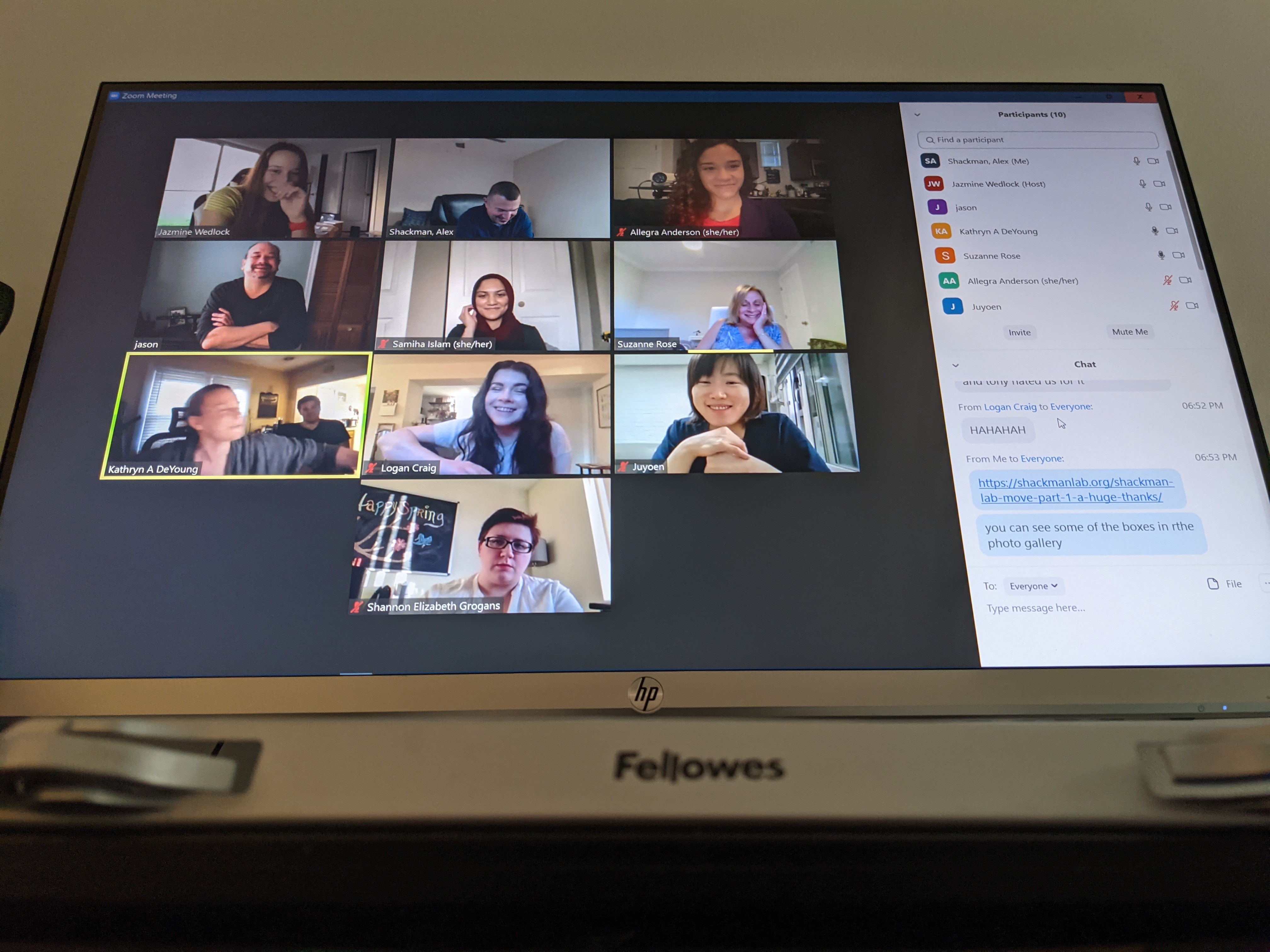
Katie wrote, It’s crazy to think that it’s been almost a full year since the COVID-19 pandemic shut down the world as we knew it. Despite the extreme uncertainty that we’ve all faced over the last year, we’ve continued to persevere and put our best foot forward. In recognition of this, I wanted to share an exciting announcement of what we have accomplished.
As of March 2021, we have finished data collection for our two and a half year longitudinal study entitled “Prospective determination of neurobehavioral risk for the development of emotion disorders,” also affectionately known as “The neuroRED Project” or “PAX.”
Beginning in the Fall of 2016, our team set out to better understand how emotions are organized in the brain, how they differ from person to person, and ways in which these differences can influence the risk of developing an anxiety disorder or depression. Our recruitment and baseline data collection efforts included the screening of over 6,000 prospective participants, 258 consents, 246 lab assessments and smartphone ecological momentary assessment (EMA) batteries, 250 clinical assessments, and 241 MRI sessions. The volume and speed at which fMRI data collection was conducted was so extraordinary that the Maryland Neuroimaging Center (MNC) called for a reform of MRI scheduling procedures. These efforts ultimately resulted in 234 participants who were eligible for the longitudinal study.
Since then, we have completed 4 follow-up data collections, including 690 lab assessments, 691 EMA batteries, and 460 clinical assessments. In the end, we achieved an overall retention rate of 97.86% – an amazing feat for a longitudinal study (see table below for more details). Our participants enjoyed being a part of this project to the extent that 96.58% of them reported that they would like to be contacted for future research opportunities with the Shackman lab. Further, this study has provided our students with a number of invaluable training opportunities, from learning how to collect and make sense of cutting-edge brain imaging data to public speaking.
All of this is an absolutely enormous accomplishment that could not have been done without the help of each and every one of you. Through tight deadlines, long weekends at the MNC, countless hours spent on the phone, and hundreds of emails… we did it! As we like to say to our participants: “Thank you so much for your continued participation in the neuroRED project over the past two-and-a-half years. Your contributions were critical to our success and have already begun to provide important new insights to the fields of psychology and neuroscience research!”
But seriously… I hope you can join us in feeling the pride, joy, and relief that we are feeling right now. This has been a remarkably rewarding journey for all of us in the lab – scientifically, professionally, and personally. Alex and I are eternally grateful for your willingness to share so much of yourselves and your time with us.
Alex wrote, First, a deep bow of gratitude to each and every one of you for making this possible. I would like to extend a special, heartfelt thanks to
-> Sue Rose, who patiently helped guide the many revisions we made to the standard SCID-5 modules, single-handedly completed hundreds of detailed clinical interviews, and was compelled to repeatedly drive to the UPS store lugging the resulting boxes of interview notes
-> Jason Smith, who built the imaging paradigms and devised new ways of processing, analyzing, and storing the data
-> Katie DeYoung, the heart and soul of the project. Katie was involved with every aspect of PAX, often working extraordinarily long hours to ensure its success. Paired with Sue’s gentle probing of subjects’ psychological innards, Katie’s cheerful case-management approach made it possible to maintain extraordinarily high levels of sample retention across multiple waves of assessment.
You three made it possible for me to maintain my sanity and (for the most part) sleep soundly at night over the past 5 years, and we and other researchers will reap the scholarly rewards of your extraordinary efforts for years to come. I am so very grateful.
Thanks to EVERYONE who contributed to this project, in ways small or large. We could not have done it without you.